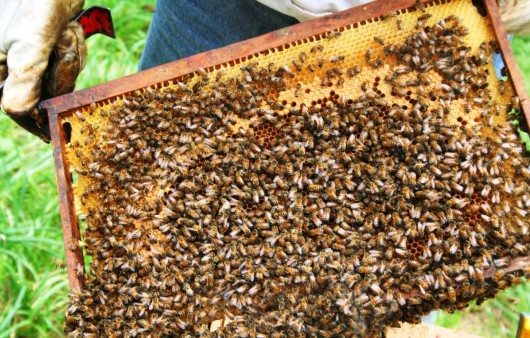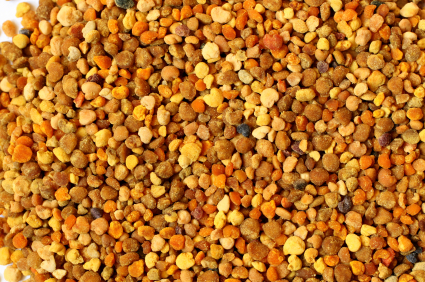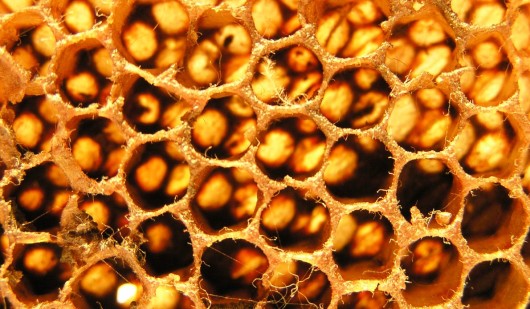Bee Propolis, a Multipurpose Natural Medicine

Propolis is the main substance used as the sustainability of a bee hive by its worker bees. It is a sticky resin secreted by the breaking down of resins that the worker bees collect on daily outings. As the worker bees collect the resin from the bark and trees in their local areas, they reserve some of the resin for multi-purposes.
What is Propolis And How Is It Made?
A chain reaction happens when a mixture of bee saliva breaks down the enzymes of the resin and creates a gluey substance. The color of the propolis will vary with each region and the native plants and trees. Diversity of the botanical resources the worker bee visits creates the different colors in which propolis can be found.

Propolis is a sticky resin secreted by the breaking down of resins that the worker bees collect on daily outings.
The favorite area of harvesting propolis for the worker bees is around coniferous trees which bear cones. This resin is known for its anti-bacteria properties and nutritional properties, it can be found in many colors hues of greens, reds, whites and blacks.
Antibiotics Alternative and Other Health Benefits
Known for being a cost-efficient alternative to over-the-counter and prescription antibiotics, propolis has no known side effects, and can be found in personal skin care products, health food supplements and homeopathic products. Orally, propolis is utilized in medicinal conditions for wound healing from bedsores, easing diabetic conditions and helping to heal wound burns.

Propolis is made when a mixture of bee saliva breaks down the enzymes of the resin and creates a gluey substance.
Autoimmune diseases like cold sores and herpes simplex can also be what propolis is used for. There are some homeopathic throat sprays that contain propilis, although it is touted as a bitter tasting ingredient.
Historical usage and Studies of Propolis
Propolis was not always culled from the bee hive and used it was thrown away because it was thought to be waste and not edible. Not until its healing properties were discovered by the Greeks and the Egyptians was it harvested. The medicinal properties and curious effects of applied propolis are still being conducted today.
The effects of heat to the propolis are being studied by Engineering and Applied Sciences. The goal of the study is to understand the role of propolis and its part in soybean oil consumption in conjunction with dietary changes. The focus being on consumer health risks for the rate of peroxide production from the combination in excess of heat over 100 degrees Celsius.
Currently being tested and studied in the field of biometrics is the green propolis in mouthwashes, and may soon show up in many of our household products. Propolis was also tested on Wistar rats for its anticarcinogenic (anti-cancer properties) and antimutagenic effects.
Is It a Super food?
Propolis can be found in as many forms as its color hues. There are powdered propolis, liquid, gels and oils. Its production form depends on its use of consumption and products it will be used in after it has been sterilized and passed quality control. Propolis is considered a super food because of its concentrated flavinoids used for anti-bacterial and autoimmune properties, as well as its dietary benefits.

Closeup of propolis grains. The color of the propolis varies with each region and the native plants and trees.
Best Ways to Consume It
As a supplemental health food additive, studies have shown it is conducive to a healthy daily nutritional diet. Many health conscious consumers are using propolis daily by adding it as a powder form into their foods. A daily recommendation of propolis in its many forms is as low as 200 milligrams to as high as 500 milligrams daily.
Some consumers of propolis actually introduce it into their cooking techniques as oil for frying and sautéing their foods; fat makes propolis more soluble for this purpose. A simple recipe for using propolis as a sauce is:
Honey and Caramel Sauce (Propolis Dessert Sauce)
- Sprig of thyme
- 1 tsp. citric zest (Lemon, lime, orange or grapefruit)
- ½ cup of honey
- 1 tsp. unsalted butter
- ¼ cup of heavy cream (Plus one teaspoon)
- Dash of sea salt
- ½ gram of propolis
Heat the honey in a saucepan until it boils into a reduction. Add the butter and cream to the honey reduction and cool the sauce. Finish up the sauce by adding the salt, propolis and the zest and thyme.
